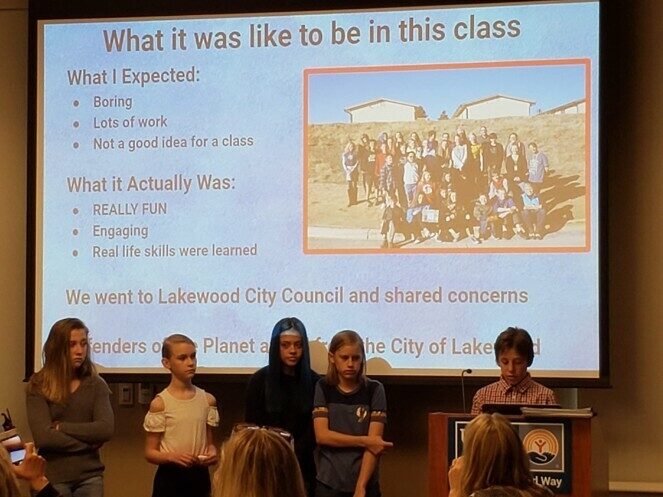How to Give Students a Voice

Photo courtesy of Earth Force
Article written by:
Alexis Thorbecke, Program Manager, Earth Force
Grace Edinger, Senior Manager of Strategic Projects, Earth Force
The more students are given the opportunity to collaborate with teachers, share their thoughts, and given real choices, the more motivated and engaged they are. As educators who want to help the Chesapeake Bay, we want students who are motivated and continue to stay motivated to protect the bay after they leave our classroom or program. Yet, many of us struggle to give students a meaningful say in their learning while meeting our own educational needs at the same time. At Earth Force, we help both formal and informal educators across the watershed use youth voice in a way that creates sustained student engagement while also making sure educators meet their own goals.
Giving students an authentic voice in their learning can be intimidating. To many educators, sharing control can feel like losing control. In reality, working with students to guide instruction can actually make classroom management easier. They become more invested in their own learning, often score better on assessments, and have higher rates of attendance in school.
Beginning down the path to incorporating youth-driven instruction does not need to be “all or nothing”. There are beginning steps that can be taken to dip your toes into these methods of instruction. For example, use thoughtful questioning to scaffold youth investigations. Guiding questions can help students think critically about the world around them without you or other instructors giving them answers. Particularly during field experiences, try providing students with open-ended questions instead of a data sheet to plug numbers into. Overall, a great way to start is to give students the opportunity to find their own answers and draw their own conclusions.
It is also important to hear all voices. One way to make sure everyone has a chance to speak is to do a Traverse Talk. To begin this activity, you need 4-6 talking points that can be debated. You can provide the topic so that you are still meeting your programmatic goals or standards, but decide on the talking points within the topic with your students. Once you have picked your talking points, split the class in two. Have the two groups line up, shoulder to shoulder, facing the other line. Each student should be directly across from a peer. Start with your first talking point and give the students 2-5 minutes to discuss the point with the person directly across from them. When the time is up, have one line shift so that each student is now facing a new partner. Continue until you have gone through all your talking points.
After these types of activities, it is always important to debrief with the class. Give students a chance to reflect on the different ideas they heard. This also gives you a chance, as an educator, to really listen to what your students have to say. Let them shape how you move forward with their thoughts, opinions, and observations.
Chances are, if you are reading this blog, you care about instilling stewardship behaviors in your students. Teaching students about the bay is important, but we can also help them become motivated to protect it, even after they leave the classroom or program. Take a look at your lesson plans and see where there might be an opportunity to let students have their voices heard.
For more information on youth voice, visit Earth Force’s website, or contact Earth Force’s Chesapeake Bay Program Manager.
